
The Latécoère 17 was a French airliner built in 1923 for use on Latécoère's own airline routes between France and Morocco. The prototype was designated the Latécoère 14, reusing the number of an unrelated earlier design that had been rejected. This new aircraft was a parasol wing monoplane of conventional configuration with an enclosed cabin for four passengers and an open cockpit for the pilot. This was Latécoère's first commercially successful design and as production continued, three different engines were fitted.
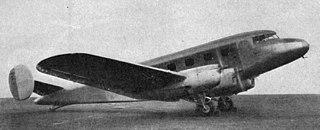
The Potez 661 was a four-engined metal low-wing monoplane airliner developed in France just before World War II. The single example flew with Air Afrique on French colonial routes.
The Latécoère 340 was a three-engined, parasol winged flying boat designed in 1929 in France for middle-distance, overseas routes. The sole prototype was destroyed early in the testing programme, and no more were built.

The Bernard 200 T was the first of a series of French light touring aircraft from the early 1930s. Single engined and seating three or four, they were high cantilever wing monoplanes. Four Bernard 200 T were built and subsequently modified into three further variants.
The Bernard 160 was a three engine, multi-role monoplane designed in the early 1930s to meet a French government call for aircraft suited to policing and medical duties in its African colonies. Two prototypes were built and tested, but no further orders were placed.

The Potez 37 was a two-seat, long range reconnaissance aircraft built to compete for a French government contract. It flew in mid-1930 but did not win the competition, so only two were completed.

The Loire-Nieuport 161 was a single-seat, single-engine, all-metal, low-wing monoplane fighter designed and built in France in 1935 to compete for a government contract. Accidents delayed its development and only three prototypes were completed.
The Morane-Saulnier MS-700 Pétrel was a French four-seat cabin-monoplane designed and built by Morane-Saulnier, only three prototypes were built.
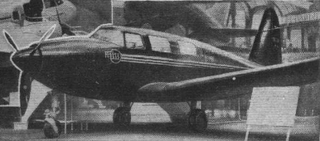
The SNCASO SO.7010 Pégase was a six-passenger light transport aircraft developed in France immediately after World War II. It was powered by a pair of tandem-coupled V-8 engines but this power plant proved to be too troublesome for development to proceed.
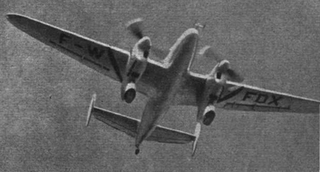
The Rey R.1 was an experimental twin engine aircraft type built in France around 1950 to test the effectiveness of sprung hinged wings in automatically correcting roll caused by gusts.
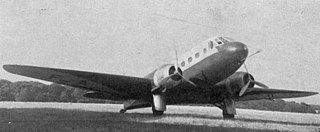
The Bréguet 670, Bréguet 670T or Bréguet-Wibault 670 was a French twin engine, all metal eighteen seat airliner with a retractable undercarriage flown in 1935. Only one was built.

The SFCA Maillet 20 was a French three seat tourer built in 1935. The Armée de l'Air ordered 30 for training and liaison and several were raced. The aircraft was developed through 1935 via cockpit layout and canopy changes to the provision of retracting landing gear.

The SFCA Lignel 20 was a French, single engine, low wing monoplane, one of a series of this type built by SFCA in the 1930s. It was capable of aerobatics but was primarily a racing aircraft.

The SFCA Lignel 10 was a French single seat aircraft designed to bridge a training gap between basic trainers and front-line fighters. The military requirement was soon dropped and only one was built.
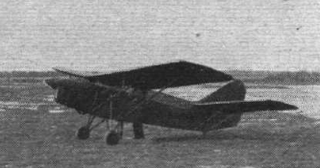
The SFCA Taupin was a French tandem-wing aircraft, designed to provide a simple, stable and safe aircraft able to take-off and land in small spaces.

The Nieuport-Delage NiD 590 was a three engine, high wing monoplane designed for policing and other roles in France's colonies, which did not go into production or enter service.
The Duverne-Saran 01 was a twin engine, three seat touring aircraft built in France in the mid-1930s. Only one was completed.
The Caudron C.570 was a French twin-engine aircraft designed and built by Caudron in the mid-1930s. It was designed to function in multiple roles; as a bomber, passenger transport, paratroop aircraft, cargo aircraft and air ambulance.
The Neiuport-Delage NiD 690 was a French all-metal, single-engined colonial policing aircraft, built for a competitive government contract. Its unusual rear fuselage gave a wide field of downward machine gun fire. Only two examples were built.
The SFCA Lignel 31 was a French, single engine, low wing monoplane, one of a series of this type built by SFCA in the 1930s. It was capable of aerobatics but was primarily a racing aircraft.













